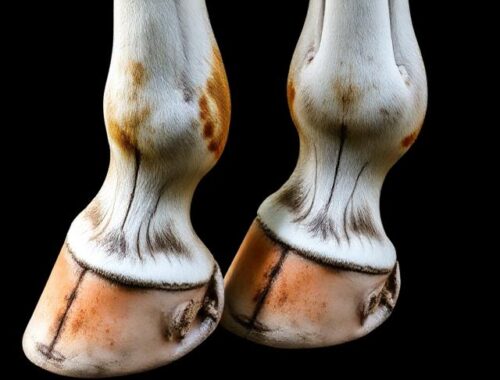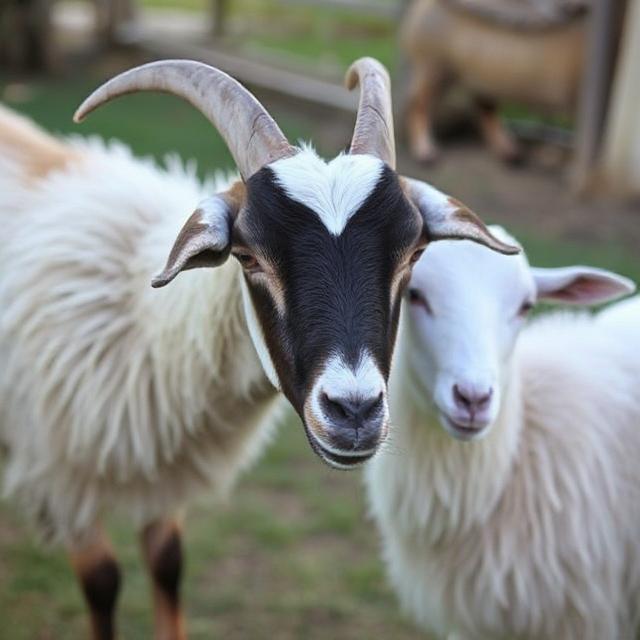
How to Spot Early Signs of Hoof Problems in Goats and Sheep
Goats and sheep are pretty resilient, but they’re not invincible. One of the most common and costly health issues they face is hoof problems in goats and sheep. Whether it’s foot scald, hoof rot in sheep, or just uneven hoof growth, small things can spiral into serious pain. The good news? Catching issues early can save you time, money, and a whole lot of stress.

Why Early Detection Matters
If you’ve ever noticed a goat suddenly limping, you know how quickly things can go south. Most hoof problems in goats start small. A bit of swelling or hesitation to walk might not seem like much, but it’s often the first warning.
A tiny stone stuck in the hoof can become a painful abscess in just two days. Foot scald, which starts with a bit of redness between the toes, can turn into hoof rot in sheep in less than a week. Uneven hoof growth might not look dramatic, but over time, it causes joint strain and makes movement uncomfortable.
One morning, we spotted a slight limp in one of our goats. That evening, she wouldn’t stand. It turned out to be a small puncture. Had we caught it earlier, it would’ve been an easy fix.
Once the limp is obvious, you’re already behind. You might end up paying for antibiotics instead of a basic trim. Healing takes longer, and your animal’s productivity often drops. A goat in pain might stop eating normally. Milk production can fall by up to 15%. Sheep in chronic discomfort often struggle to breed.
Signs You Don’t Want to Miss
Watch for these early indicators:
- A raised foot while standing.
- Unusual wear on the hooves.
- Minor swelling above the hoof.
- A goat that won’t jump or trails behind.
- A change in eating habits.
- Extra warmth in one hoof.
- A faint, sour smell.
- Tiny dark patches on the hoof sole.
Even a quick glance during feeding can reveal something’s off. Daily checks take seconds and make a world of difference.
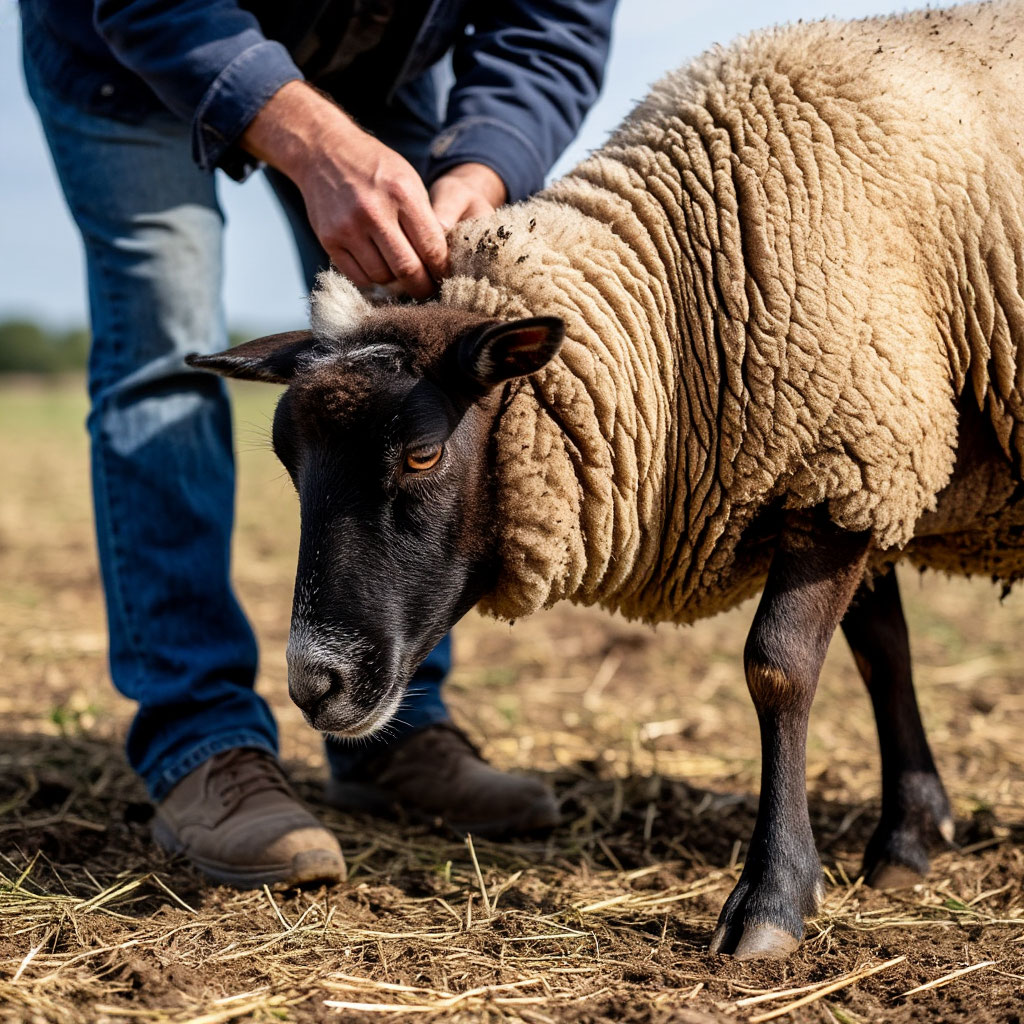
Common Hoof Conditions in Goats and Sheep
Many hoof problems in goats and sheep have clear causes, especially if animals live in damp or unclean conditions. Let’s look at the most common ones.
Foot rot is one of the worst. It’s caused by bacteria and usually starts in wet pastures. You’ll notice a bad smell, dark or soft hoof tissue, and goats that limp severely. This condition spreads quickly if you don’t isolate and treat the animal. Hoof rot in sheep looks very similar and needs the same attention.
Foot scald is an earlier, milder form of hoof rot. It causes red, irritated skin between the toes. Sheep and goats might seem just slightly off, but it worsens fast without care. Clean hooves and dry shelter usually stop it before it turns serious.
Uneven hoof growth is often overlooked. If the ground is too soft or lacks natural abrasion, hooves grow out of balance. The animal starts walking oddly, and if trimming is skipped too long, joints and tendons take the hit.
Abscesses form when a sharp object pierces the hoof and lets bacteria in. One minute your goat is fine; the next, it won’t put any weight on that leg. The area becomes warm and swollen. These need draining and care to avoid complications.
Overgrown hooves are easy to spot. They look curled, thick, or cracked. They make movement harder and allow debris to pack in. Regular trimming keeps this under control.
Knowing these conditions — and what they look like — gives you a solid foundation for spotting problems before they spread.
Behavioral Signs of Hoof Pain
Sometimes, physical changes are subtle. But behavior? That usually speaks loud and clear. You might not spot swelling right away, but you’ll notice when your goat stops climbing or when a sheep lags behind the flock.
A small limp may show up before you see any damage. It could be from something as simple as foot scald. When goats stop jumping onto platforms or hesitate at feeding time, it’s worth paying attention. A sudden change in activity almost always signals something going on with their feet.
If a sheep spends more time lying down or avoids walking with the group, don’t assume it’s just tired. That could be a sign of discomfort or early infection. And when food becomes less interesting? That’s often a red flag for deeper pain or fever.
Temperature differences between hooves can also point to infection. Use the back of your hand to compare them. One hoof noticeably warmer than the others might already be in trouble. A mild odor could signal early rot before it becomes overwhelming.
Here’s a quick reference table with common behavioral signs and what they could indicate:
| Behavior | Possible Cause |
|---|---|
| Slight limp | Abscess or mild foot scald |
| Refusal to jump or climb | Pain from uneven hoof growth |
| Lagging behind the herd | Discomfort or early-stage infection |
| Less interest in eating | Hoof pain or systemic infection |
| Lying down more than usual | Avoiding pressure on swollen hooves |
Tracking these behaviors helps you take action early — before small ruminant hoof care turns into emergency care.
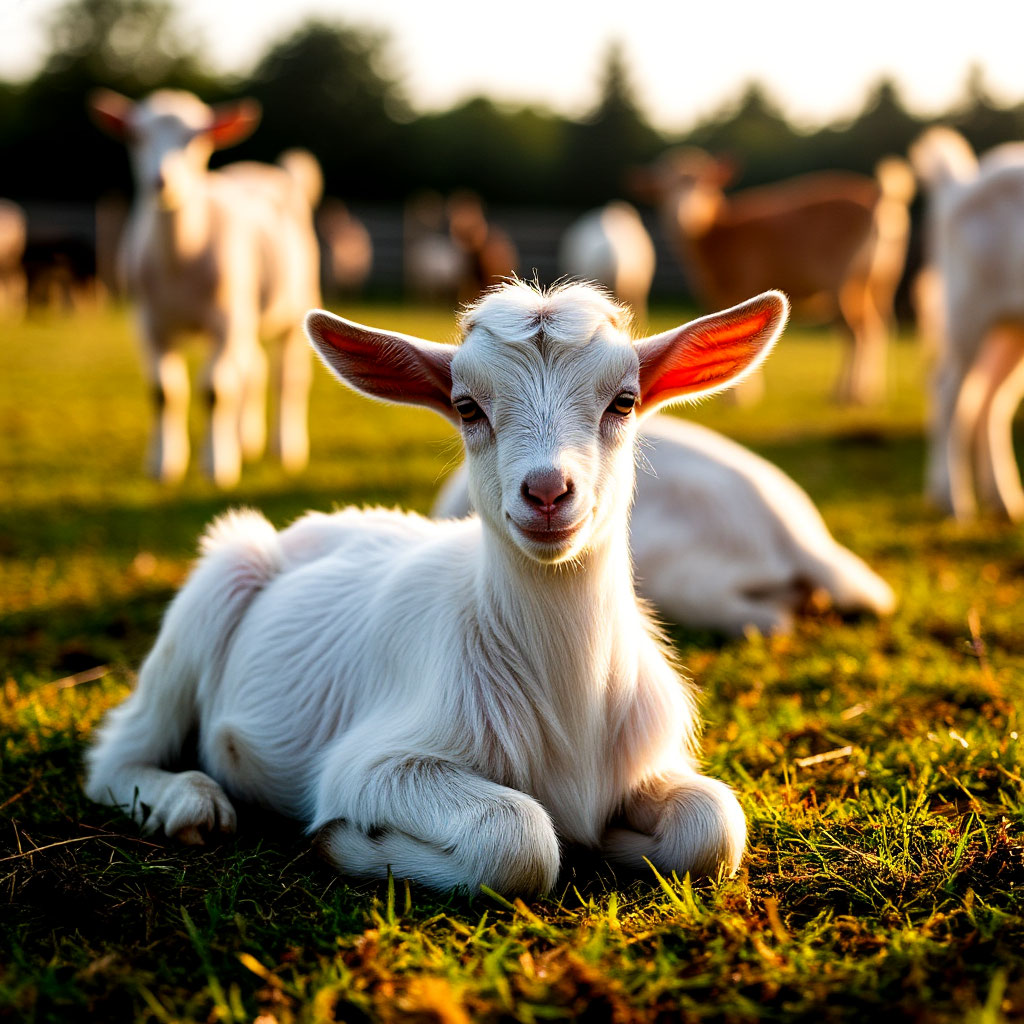
How to Inspect Hooves Properly
Checking hooves doesn’t take long. If it’s part of your routine, you’ll start noticing issues before they become serious.
Start by gently restraining the animal. Use a stand or ask someone to hold them calmly. Feel each hoof for warmth, especially near the coronary band. Heat often points to infection. Check for swelling — particularly around the top of the hoof.
A strong smell usually means something’s wrong. Bacteria leave a specific, unpleasant scent that’s hard to miss. Use a hoof pick to remove dirt or packed debris. Look for dark spots or cracks that could be hiding infection.
Hooves that feel soft, spongy, or hot need special attention. If you notice pus or see that the animal avoids pressure on one foot, infection may already be setting in. A clean hoof should be dry, firm, and neutral in odor.
If things don’t look better after a couple of days, it’s best to get your vet involved. Waiting too long with hoof issues only leads to more pain and higher bills.
Preventative Hoof Care Measures
Preventing hoof problems in goats and sheep starts with their environment. Damp ground softens hooves, making them more likely to pick up infections. Rotating pastures helps keep mud levels down. Adding gravel or drainage paths in high-traffic areas makes a big difference.
Clean bedding is another big one. Especially in rainy seasons, you’ll want to swap out straw or shavings often. Wet bedding breeds bacteria fast. Keep barns well-ventilated and floors dry.
Regular hoof trimming keeps everything in check. Goats usually need it every 4 to 6 weeks, while sheep go a bit longer. If the hooves start curling or cracking, that’s a sure sign you’ve waited too long.
Here’s a simple routine that helps prevent most hoof issues:
- Rotate grazing areas to avoid constant moisture buildup.
- Change bedding weekly, or more often in wet weather.
- Trim hooves on a regular schedule — don’t skip.
- Keep foot baths with zinc or copper sulfate in use during rainy seasons.
- Pick out hooves weekly to remove debris and check for odor or heat.
Consistent care doesn’t just prevent infections. It builds trust. Animals that get handled often are easier to treat if something ever goes wrong.
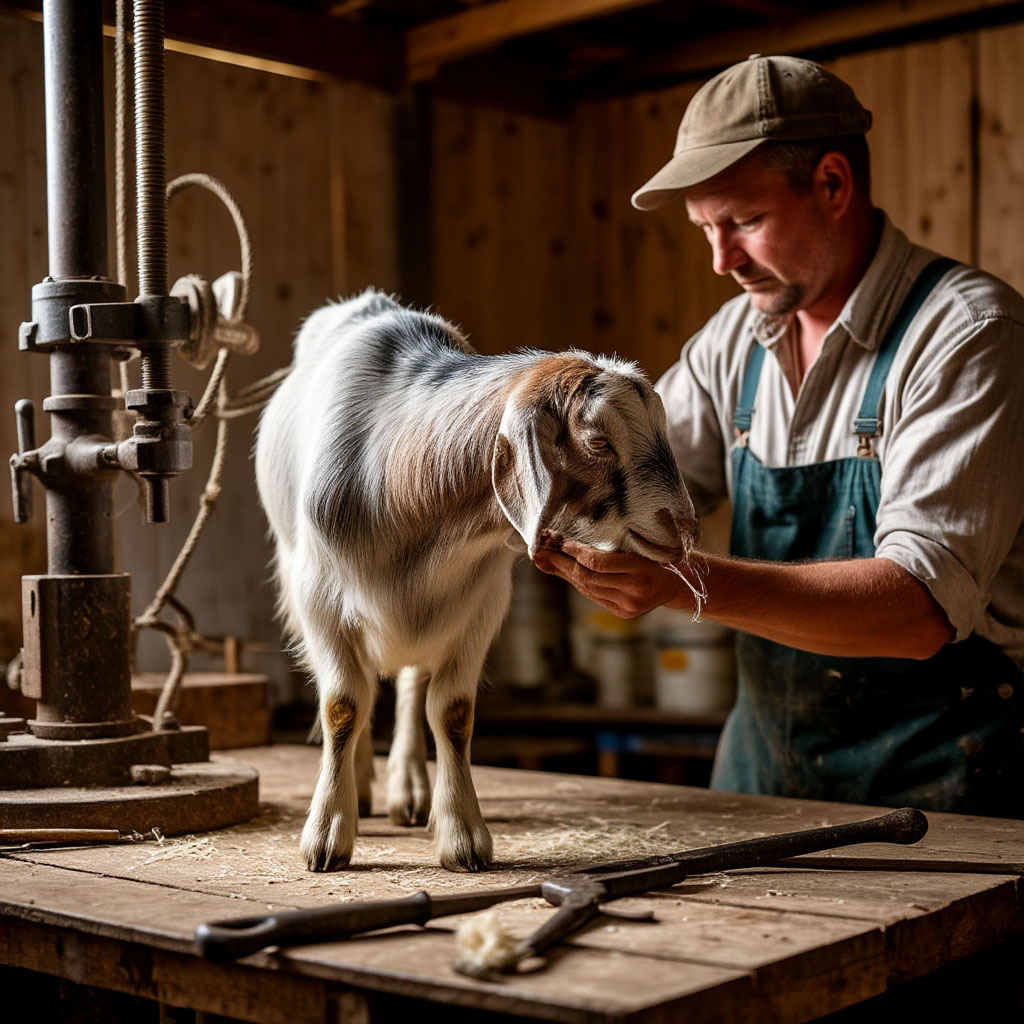
When to Treat at Home vs. Call a Vet
Not every hoof issue needs a vet right away. Small chips, dry spots, or slight unevenness can be handled at home. If your goat seems fine otherwise and the hoof looks clean, you can trim or clean it yourself.
But if the area’s swollen, warm, or smells bad, you’ll want a second opinion. Limping in goats that doesn’t improve within a day or two could mean an abscess. And if there’s a fever or the animal stops eating, the infection might be spreading beyond the hoof.
Calling a vet early can prevent a small wound from turning into a long-term problem. If there’s any doubt, it’s better to ask. Painful hooves affect everything — from feeding and movement to breeding and growth.
Long-Term Health Management
Caring for hooves isn’t a once-a-month job. It’s a daily mindset. You don’t need to inspect every hoof every day, but paying attention makes all the difference.
Do a quick check while feeding or watering. Look at how they’re walking. If something feels off, take a closer look. Staying consistent with trims and keeping their space clean avoids most common issues.
Goats and sheep are pretty hardy, but their hooves need your help. They can’t tell you something hurts — but they’ll show it. Spotting hoof problems in goats early means less pain for them and fewer problems for you. Keep it simple, stay alert, and your herd will thank you with every easy step they take.
You May Also Like
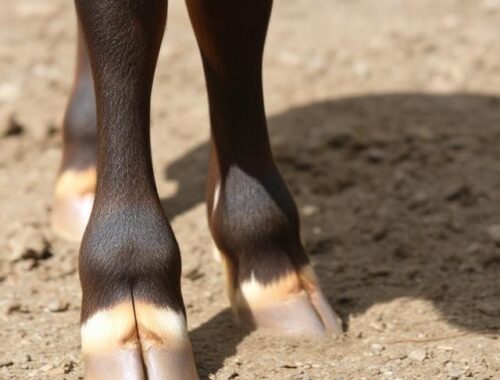
Comparing Cloven and Single Hooves: Anatomy Across Species
June 26, 2025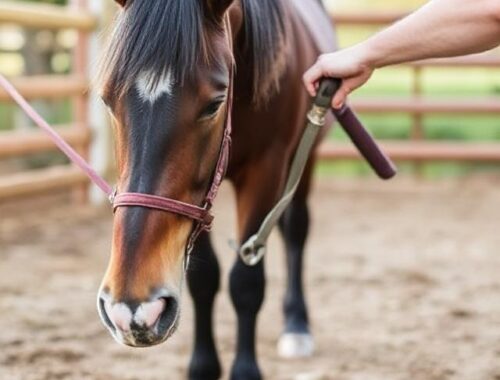
Top 5 Hoof Cleaning Mistakes and How to Avoid Them
June 26, 2025